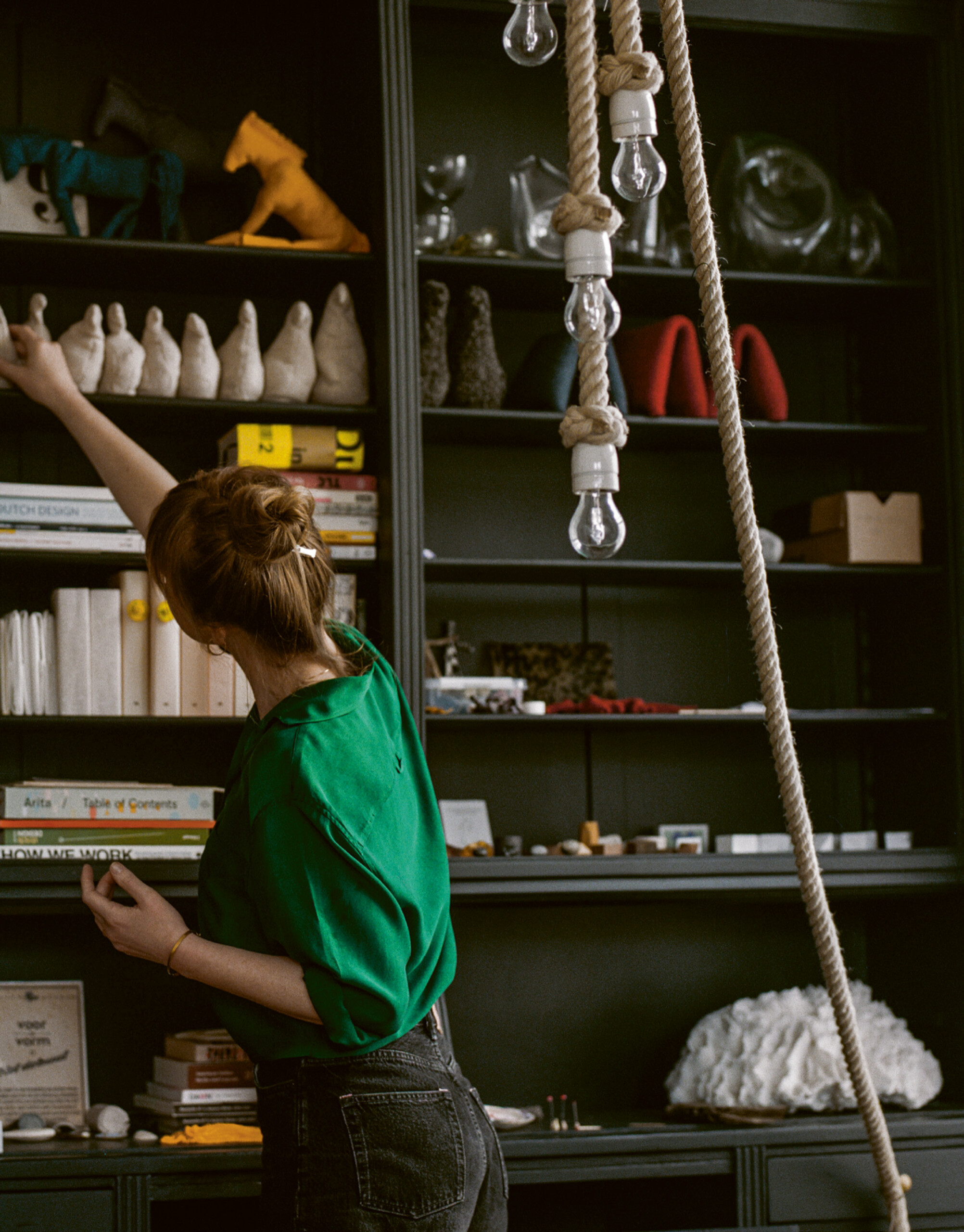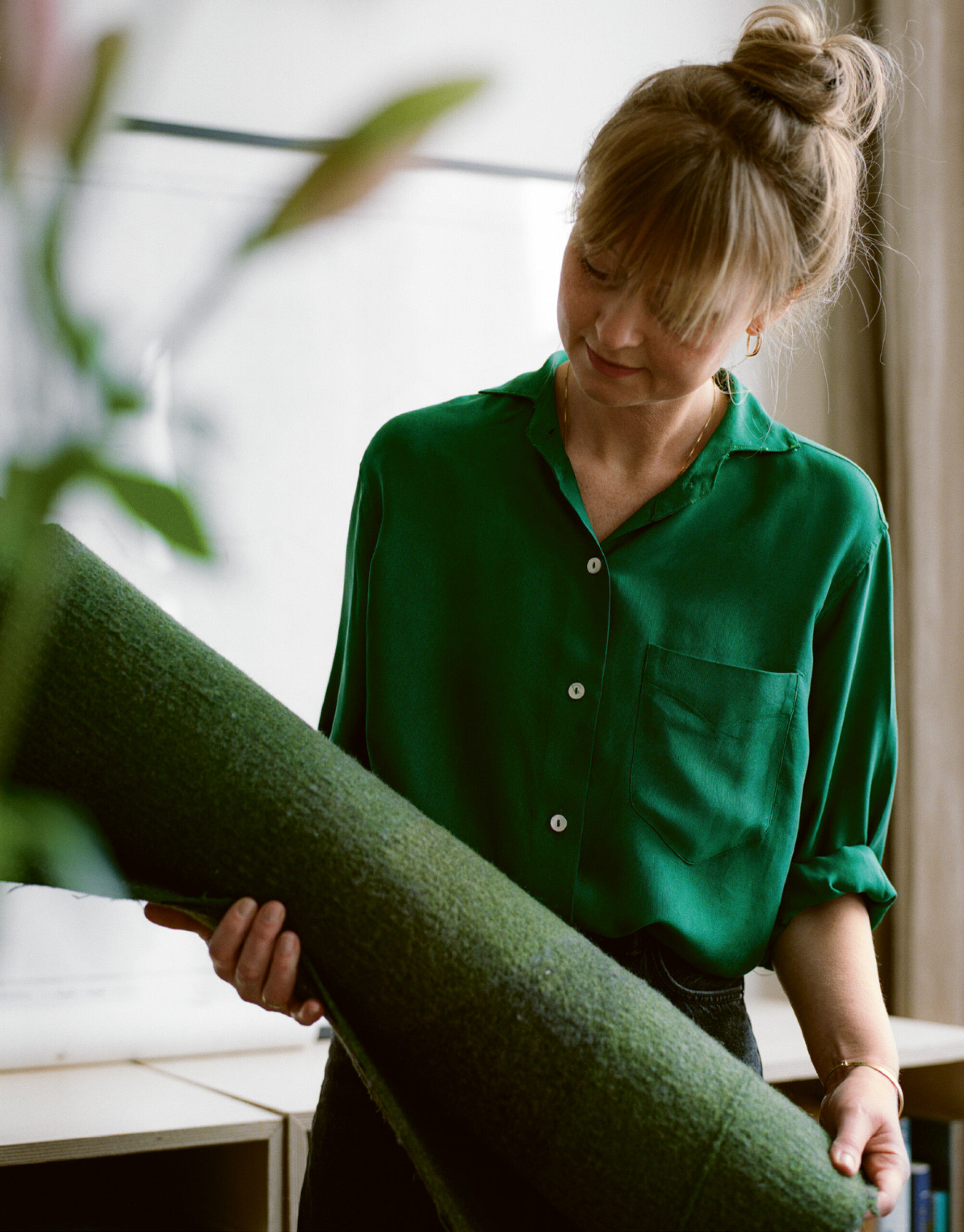The documentary designer
Christien Meindertsma

Christien
Meindertsma
The young Dutch designer’s long, loosely braided blonde hair and fresh-faced, almost cherubic looks give her a girlish appearance. Her alert dark eyes gaze directly into the camera, open and questing. Despite her initial unwillingness to agree to an interview, a torrent of words comes pouring out. You read in the newspapers that there are people who are secretly relieved about the absence of all their social commitments and the things they feel obliged to do. I think I must be one of those people. Personally, I love just sitting on my rug and working. Christien Meindertsma’s preference for immersing herself in her work rather than talking about it becomes perfectly clear when we realise exactly what that work involves. Combining scientific precision with the meticulousness of an artist, she explores the links between raw materials and the products that throng our daily lives, and unveils previously invisible relationships and connections between resources and consumers. Her uniquely investigative approach to design, focusing on and documenting a specific topic or material like wool or flax in projects which may occupy her for years on end, often attracts commissions from clients; yet she is constantly occupied by the question of why processes are the way they are, and whether they could be different.
“I see connections in everything all the time”
A photo montage shows many neatly folded woollen sweaters, all arranged by colour, all laid out next to each other and photographed from above. The darkest shades are at top left, the lightest at bottom right. A further photo shows part of an industrial hall containing a blue metal chest crammed with old woollen sweaters, a conveyor belt, a sorting machine and wire carts on wheels containing more sweaters. In the foreground of the space are piles of textiles, strikingly sorted by colour into large and small heaps of pale pink, old rose, an attractive sunshine yellow, dark violet, bright pink and many different blues. The biggest piles are taken up by black and shades of grey. The wall is covered with an installation reminiscent of the artist Hanne Darboven; countless pieces of paper pinned in dense rows each display an original section of a sweater, with its label stating the fibre blend, and a tiny bag with a sample of those fibres. The foreground is occupied by a table on which shredded textiles, likewise carefully sorted, are mounded in small pointed heaps to form an impressive and richly colourful material presence.
This 2016 project by Dutch product designer Christien Meindertsma is entitled Fibre Market. In it, she explored the possibilities offered by a fibre-sorting machine developed by Wieland Textiles and Valvan Baling Systems with the aim of improving recycling processes for clothing items. By scanning and sorting the items based on their material content, the machine radically speeds up and simplifies a difficult and complex process that is usually dependent on the sense of touch and thorough visual assessment. In the commission, created by Meindertsma for the Fear and Love exhibition at London Design Museum, she used the machine to scan 1000 woollen sweaters and compared the resulting scans with the information on the product labels, noting discrepancies between the two sources. The dedication of her approach and her painstaking documentation turns the spotlight on the difficulties of textile recycling—recycled clothing must all be made from the same fibres if it is to be processed into high-quality material—while causing us to view the sweaters in our own wardrobes with fresh eyes. Christien Meindertsma is fascinated by the concept and process of taking things apart and reassembling them. I’m really interested in how we are all connected, and where things come from. So sometimes by taking things apart you can find out what its ingredients are, what its essence is. I see connections in everything all the time, like: Where does it come from? Where does it go? Who made this for me? What is its impact?
Characteristically, in Fibre Market Meindertsma likewise did more than simply unravel our sweaters; she used the nicely colour-sorted woollen fibres to create something new. In her follow-up project, Fibre Market—Donegal Tweed, she organised the production of a fabric that would bring out those hues to their best effect. Irish-made Donegal tweed was an ideal choice, with its typical tiny flecks of vividness. Its historical origins were rooted in necessity; in times where coloured yarns were a rarity, they were limited to decorative use only, a mere sprinkle across the fabric surface. Meindertsma’s idea was to create a Donegal-style tweed, but incorporating recycled wool fibres to give the classic flecks. The yarn was manufactured by Donegal Yarn, the region’s last industrial spinner of this local yarn, and woven into cloth by Molloy and Sons, traditional Donegal tweed weavers in the fourth generation. The project formed part of the Change the System exhibition at Boijmans Van Beuningen Museum, Rotterdam.

“I’m convinced there is pig in lipstick”
Please select an offer and read the Complete Article Issue No 10 Collection Issues No 7, 8, 10 Subscriptions
Already Customer? Please login.
